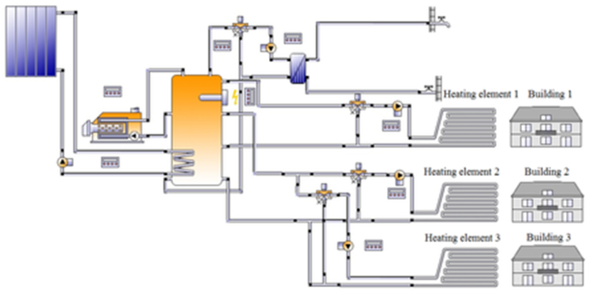WP1-5 Modern planning methodology for local heating networks
Supervisor(s)
Hosted by: | Vela Solaris AG, Winterthur, Switzerland |
|---|---|
Student: | Artem Sotnikov |
Started: | 01/2014 |
Supervisor(s): | Dr. Andreas Witzig (Vela Solaris AG) |
Short description
While today's functionality of Polysun is restricted to single houses, it is the goal to cover larger and more complex thermal systems. In close collaboration with the software engineers of Vela Solaris the numerical models of the heat demand from district heating systems are implemented. Several heat sources such as solar collectors, geothermal probes, power heat cogeneration as well as the various ways for heat storage are already available at project start. Therefore, the work can focus on the system control and optimization strategy. The Polysun models and the system control strategies are validated and the model parameters are calibrated both with use of existing measurement data and with reference to TRNSYS simulations. For this task, there will be a strong collaboration with other researches within the SHINE network and with collaboration with the leading Universities.
The first task was the extension of Polysun`s building model to cover multiple residential units within one system boundary (see figure below). This goal required also the extension to models of heating elements and system components which are subject of heat interaction with building (e.g. storage tank). The next task was to extend several existing models to make them more suitable for district heating application. In the scope of this task user-defined number of nodes storage tank and buried pipe models were developed. It enables simulation of heating centrals (with large storage tanks) and distribution networks. In order to check developed models, a real system at Vallda Heberg has been modelled in Polysun and calibrated against measured data. An article on this and comparison with TRNSYS results is being prepared together with Christian Nielsen a former PhD student at Högskolan Dalarna and Martin Andersen PhD student at Högskolan Dalarna.
The next stage has started, which is to extend the building model to being a multi-zone model instead of a single node. A number of physical models of building components were implemented and proven by means of JUnit tests. Now an interface between Polysun and the new model shall be built. Then it will be calibrated against TRNSYS`s Type 56 building model.

